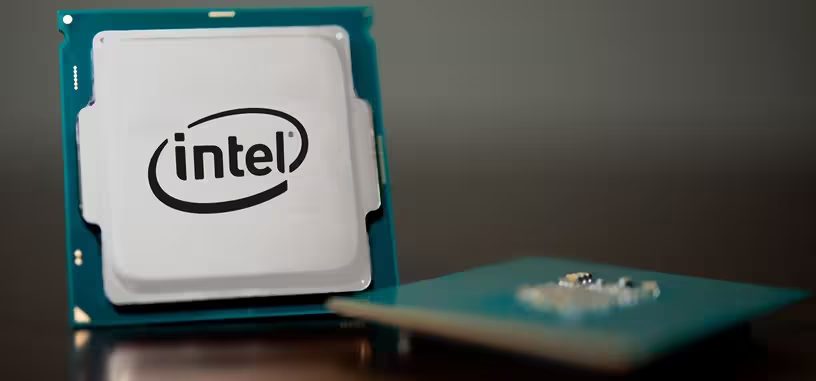Intel está preparando un cambio importante en su arquitectura para los procesadores Core de 12.ª generación, los denominados Alder Lake, o al menos a ello apuntan los rumores. Usarán un zócalo LGA 1700 y tendrán una arquitectura bastante distinta ya que abrazaría el concepto de núcleos de alto rendimiento y núcleos de ahorro de consumo de la arquitectura ARM, la cual lo denomina big.LITTLE.
Han ido aparecido en los últimos meses posibles configuraciones de núcleos para estos procesadores, y ahora ha llegado un listado aún mayor del que se ha hecho eco Videocardz. Dejan ver que serían todas las configuraciones posibles de núcleos de rendimiento (x), núcleos de consumo (y) y tipo de gráfica integrada (z). Lo indica con la nomenclatura «x+y+z».
Aparentemente el máximo de estos procesadores sería de ocho núcleos de rendimiento, ocho núcleos de consumo y una configuración GT0/GT1/GT2 (mostrado como 0/1/2) para la gráfica integrada. Se hace referencia además a dos series, Alder Lake S y Alder Lake P, con las configuraciones que veis en las siguientes líneas.
- { PCI_DEVICE_ID_INTEL_ADL_S_ID_1, “Alderlake-S (8+8+1)” },
- { PCI_DEVICE_ID_INTEL_ADL_S_ID_2, “Alderlake-S (8+6+1)” },
- { PCI_DEVICE_ID_INTEL_ADL_S_ID_3, “Alderlake-S (8+4+1)” },
- { PCI_DEVICE_ID_INTEL_ADL_S_ID_4, “Alderlake-S (8+2+1)” },
- { PCI_DEVICE_ID_INTEL_ADL_S_ID_5, “Alderlake-S (8+0+1)” },
- { PCI_DEVICE_ID_INTEL_ADL_S_ID_6, “Alderlake-S (6+8+1)” },
- { PCI_DEVICE_ID_INTEL_ADL_S_ID_7, “Alderlake-S (6+6+1)” },
- { PCI_DEVICE_ID_INTEL_ADL_S_ID_8, “Alderlake-S (6+4+1)” },
- { PCI_DEVICE_ID_INTEL_ADL_S_ID_9, “Alderlake-S (6+2+1)” },
- { PCI_DEVICE_ID_INTEL_ADL_S_ID_10, “Alderlake-S (6+0+1)” },
- { PCI_DEVICE_ID_INTEL_ADL_S_ID_11, “Alderlake-S (4+0+1)” },
- { PCI_DEVICE_ID_INTEL_ADL_S_ID_12, “Alderlake-S (2+0+1)” },
- { PCI_DEVICE_ID_INTEL_ADL_P_ID_1, “Alderlake-P (2+8+2)” },
- { PCI_DEVICE_ID_INTEL_ADL_P_ID_2, “Alderlake-P (2+4+2)” },
- { PCI_DEVICE_ID_INTEL_ADL_P_ID_3, “Alderlake-P (6+8+2)” },
- { PCI_DEVICE_ID_INTEL_ADL_P_ID_4, “Alderlake-P (6+4+2)” },
- { PCI_DEVICE_ID_INTEL_ADL_P_ID_5, “Alderlake-P (4+8+2)” },
- { PCI_DEVICE_ID_INTEL_ADL_P_ID_6, “Alderlake-P (2+4+2)” },
- { PCI_DEVICE_ID_INTEL_ADL_P_ID_7, “Alderlake-P (2+8+2)” },
- { PCI_DEVICE_ID_INTEL_ADL_P_ID_8, “Alderlake-P (2+0+2)” },
- { PCI_DEVICE_ID_INTEL_ADL_P_ID_9, “Alderlake-P (2+0+2)” },
- { PCI_DEVICE_ID_INTEL_ADP_P_ESPI_0, “Alderlake-P-Base SKU” },
- { PCI_DEVICE_ID_INTEL_ADP_P_ESPI_1, “Alderlake-P-Super SKU” },
- { PCI_DEVICE_ID_INTEL_ADP_P_ESPI_2, “Alderlake-P Premium SKU” },
- { PCI_DEVICE_ID_INTEL_ADP_P_ESPI_3, “Alderlake-P Mainstream SKU” },
- { PCI_DEVICE_ID_INTEL_ADP_P_ESPI_4, “Alderlake-P-Base SKU” },
- { PCI_DEVICE_ID_INTEL_ADP_P_ESPI_5, “Alderlake-P-Base SKU” },
- { PCI_DEVICE_ID_INTEL_ADP_P_ESPI_6, “Alderlake-P Super SKU” },
- { PCI_DEVICE_ID_INTEL_ADP_P_ESPI_7, “Alderlake-P Premium SKU” },
- { PCI_DEVICE_ID_INTEL_ADP_P_ESPI_8, “Alderlake-P-Base SKU” },
- […]
- { PCI_DEVICE_ID_INTEL_ADP_S_ESPI_0, “Alderlake-S-Base SKU” },
- { PCI_DEVICE_ID_INTEL_ADP_S_ESPI_1, “Alderlake-S-Super SKU” },
- { PCI_DEVICE_ID_INTEL_ADP_S_ESPI_2, “Alderlake-S Premium SKU” },
- { PCI_DEVICE_ID_INTEL_ADP_S_ESPI_3, “Alderlake-S Mainstream SKU” },
- { PCI_DEVICE_ID_INTEL_ADP_S_ESPI_4, “Alderlake-S-Base SKU” },
- { PCI_DEVICE_ID_INTEL_ADP_S_ESPI_5, “Alderlake-S-Base SKU” },
- { PCI_DEVICE_ID_INTEL_ADP_S_ESPI_6, “Alderlake-S Super SKU” },
- { PCI_DEVICE_ID_INTEL_ADP_S_ESPI_7, “Alderlake-S Premium SKU” },
- { PCI_DEVICE_ID_INTEL_ADP_S_ESPI_8, “Alderlake-S-Base SKU” },
- { PCI_DEVICE_ID_INTEL_ADL_GT0, “Alderlake GT0” },
- { PCI_DEVICE_ID_INTEL_ADL_GT1, “Alderlake GT1” },
- […]
- { PCI_DEVICE_ID_INTEL_ADL_P_GT2, “Alderlake P GT2” },
- { PCI_DEVICE_ID_INTEL_ADL_S_GT1, “Alderlake S GT1” },
Vía: TechPowerUp.





